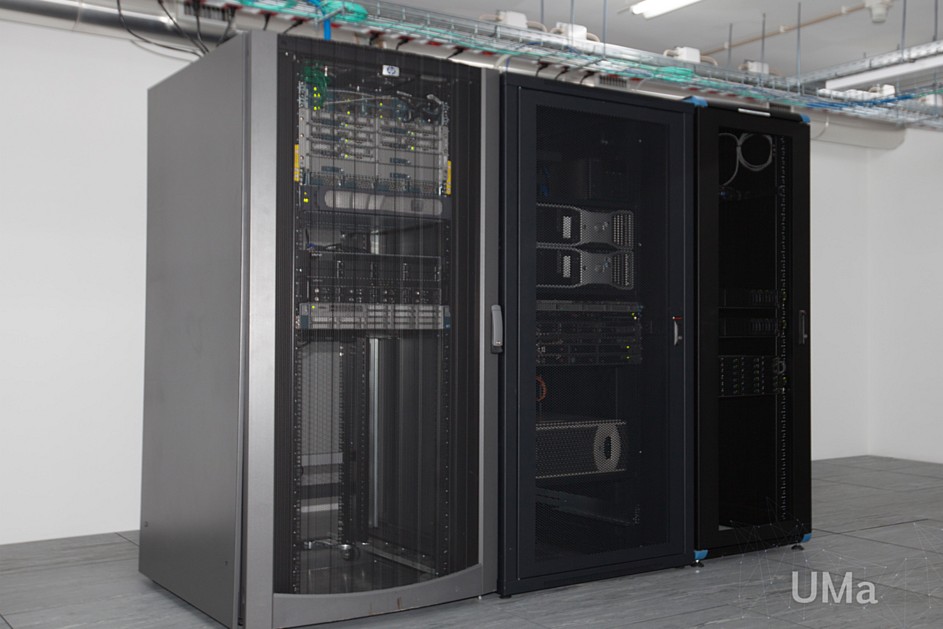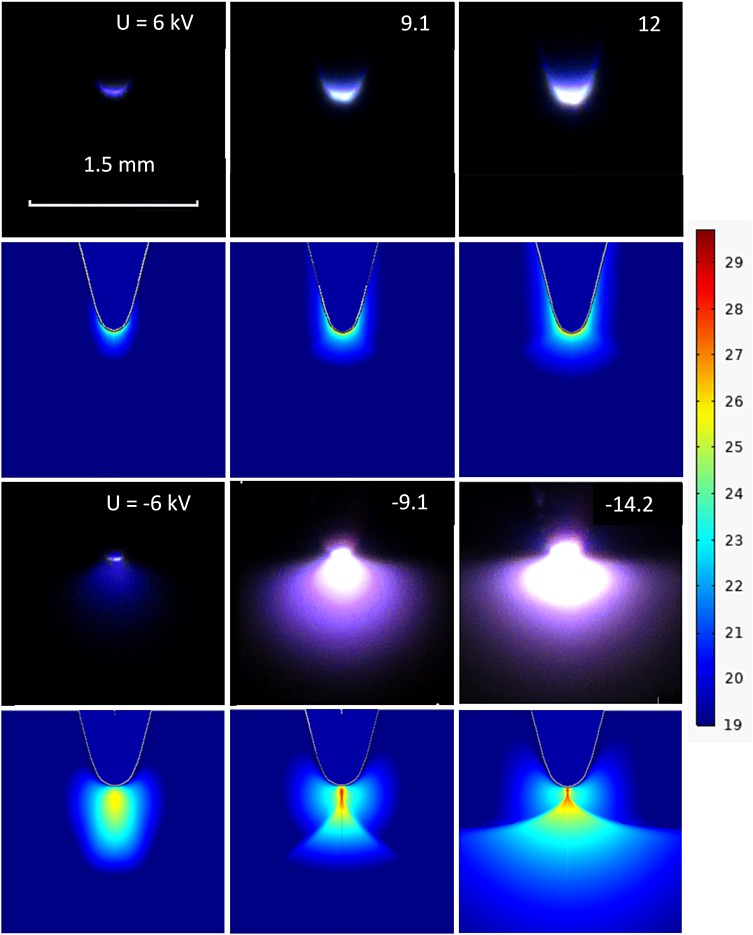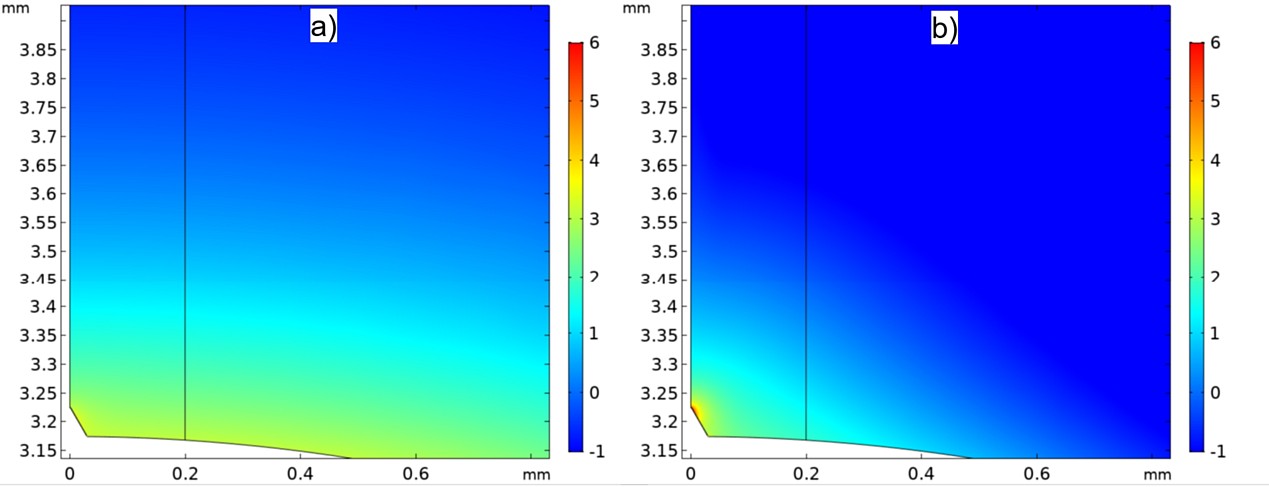Research
Summary of research 2020-2022
What is the state-of-the-art of models of interaction of high-pressure arcs with their electrodes? Can stationary solvers be used to study the time-averaged characteristics of DC corona discharges? Can the enhanced ionization of air molecules in regions of amplified electric field near microprotrusions explain deviations from the similarity law observed in the experiment? What is the role of different mechanisms of current transfer to non-thermionic arc cathodes?
Apart from searching answers to these questions, the group has also focused on developing a practical tool for modeling low-current quasi-stationary gas discharges, as well as a numerical model of vacuum arcs in transverse magnetic fields, in the framework of an industry-sponsored project with Siemens AG started in April 2020.
The search for answers to these questions has been facilitated by the creation and installation of a high-performance computing lab, thus having significantly expanded the scope of predictive simulation capabilities of the group.
Our main goals are: to develop numerical models of the plasma-electrode interaction for different types of discharges; to develop accurate and robust tools for modelling of the whole range of existence of quasi-stationary discharges, as well as the characteristics of DC corona discharges; to clarify the mechanisms of current transfer to non-thermionic arc cathodes; among others.
Methods used to achieve those goals range from numerical modelling to experiments performed by our industrial partners. The obtained results are useful for the investigation of physics of high-power circuit breakers conducted in the framework of industry-sponsored projects.
Research highlights 2020-2022
Creation and installation of a high-performance computing lab
The creation of the IPFN Research Node at the University of Madeira (UMa) in 2017 opened access to regional funding for the High-Pressure Plasmas Group, an opportunity that the group has successfully used by submitting an application for a large-scale research project through the Operational Program of the Autonomous Region of Madeira 2014–2020 for research and development in the field of Energy, Mobility and Climate Change. The large-scale research project PlasMa: Theory and advanced simulation of plasmas relevant to energy applications, M1420-01-0145-FEDER-000016, was awarded to the group in 2019. The project is funded with more than 1.4M€, for four years, by the European Union (85% of funding) through the European Regional Development Fund, and by UMa. Project PlasMa capitalizes on HPPG’s acquired experience and significantly enhances the potential for knowledge transfer to the high-tech electrical industry.
Funding from the project PlasMa resulted in the creation and installation of a high-performance computing lab, which has significantly expanded the scope of predictive simulation capabilities of the group. On October 28, 2020, the Research Node of IPFN at UMa was visited by the President of the Regional Government of Madeira, Dr. Miguel Albuquerque, the Regional Secretary for Education and the President of the Board of Directors of the Regional Development Institute, being also present among others, UMa’s rector, Prof. José Carmo. The President of the Government was introduced to the investigation carried out at the Node and inaugurated the Zarco supercomputer.
Contact persons: Diego Santos.

Inauguration of the Zarco supercomputer at the Research Node of IPFN at UMa.
State-of-the-art of modeling of interaction of high-pressure arcs with their electrodes
A review of state-of-the-art of modeling of interaction of high-pressure arcs with their electrodes was written. The review was invited by the Editors of the Special Issue of Journal of Physics D: Applied Physics [1], dedicated to thermal-plasma–material interactions, and was published as a Topical Review [2]. The importance of the topic stems from the fact that incorporation of realistic models of plasma-electrode interaction remains a bottleneck in the development of predictive models of devices with high-pressure arcs. The most important aspects of the underlying physics have already been understood, so no fundamentally new physical mechanisms have been described in the recent publications (which are many); the aim was rather to develop practical numerical models that adequately describe known mechanisms. Unfortunately, no universally accepted numerical models have emerged: the developed models are in many cases incompatible with each other, and it is not easy to identify the place of each model in the global picture. The aim of the review was to summarize physically justified descriptions of the interaction of high-pressure arcs with their electrodes and to survey from this point of view the recent works, thus bringing them into a kind of system insofar as possible. The relevant aspects of the conventional LTE arc models were discussed and outstanding challenges for future work identified.
Contact person: Mikhail Benilov.
Computational and experimental study of time-averaged characteristics of positive and negative DC corona discharges in point-plane gaps in atmospheric air
The use of stationary solvers - instead of approximate solution methods or time-dependent solvers, which are standard tools in gas discharge modelling - allows one to develop a very fast and robust numerical model for studying the time-averaged characteristics of DC corona discharges. Such an approach has been applied to DC corona discharges in point-plane gaps in ambient air. A wide range of currents of both voltage polarities and various gap lengths were investigated, and the simulation results were validated by comparing the computed current-voltage characteristics and spatial distributions of the radiation intensity with experimental results.
Contact persons: Mikhail Benilov, Nuno Ferreira.

Images of positive and negative corona discharges and simulation results of distributions of excitation rate of radiating N2 states for various applied voltages in atmospheric-pressure air. Computed distributions in m-3s-1 on a logarithmic scale. Applied voltage U for positive (upper two rows) and negative (bottom two rows) polarity. Gap width d=14 mm.
Simulation of pre-breakdown discharges in high-pressure air
There is vast interest in obtaining information about microprotrusions on the surface of the electrodes of discharges. In this work, results of simulations are compared with experiments on discharge ignition and breakdown in corona-like configurations; 2D numerical modelling with conical or cylindrical protrusions on the surface of the inner electrode were performed. The enhancement of the field electron emission from the surface of the negative electrode due to the amplification of the electric field on the microprotrusion was estimated and found insignificant in the range of values of the protrusion aspect ratio where the enhanced ionization in the gas phase is already appreciable. It is shown that the deviations from the similarity law, observed in the experiment, may indeed be attributed to enhanced ionization of air molecules in regions of amplified electric field near the microprotrusions.
Contact persons: Mikhail Benilov, Nuno Ferreira.

Distribution of negative ions O2- (densities in m-3 on a logarithmic scale) in the vicinity of a conical protrusion (height = 50 µm) at the surface of a positive electrode (sphere radius = 3.18 mm). Air at (a) p = 1 atm. (b) p = 5 atm.
A practical guide to modeling low-current quasi-stationary gas discharges
We published a tutorial in the concerning the modelling of low-current quasi-stationary discharges, including the Townsend and corona discharges [3]. The aim is to develop an integrated approach suitable for the computation of the whole range of existence of a quasi-stationary discharge from its inception to a non-stationary transition to another discharge form, such as a transition from the Townsend discharge to a normal glow discharge or the corona-to-streamer transition. This task includes three steps: (i) modeling of the ignition of a self-sustaining discharge, (ii) modeling of the quasi-stationary evolution of the discharge with increasing current, and (iii) the determination of the current range where the quasi-stationary discharge becomes unstable and the non-stationary transition to another discharge form begins. Each of these three steps is considered in some detail with a number of examples, referring mostly to discharges in high-pressure air.
Contact persons: Pedro Almeida, Mikhail Benilov.
Numerical investigation of AC arc ignition on cold electrodes in atmospheric-pressure argon
The mechanism of current transfer to non-thermionic arc cathodes cannot be clarified or studied in detail in experiments. As an alternative, we attempted to study the mechanism by means of a numerical model based on first principles and not based on a priori assumptions. Our goal was to investigate the ignition of AC arc on cold electrodes in atmospheric-pressure argon. The approach used is so-called unified modelling, where a single set of differential equations, comprising conservation and transport equations for all plasma species, the electron and heavy-particle energy equations, and the Poisson equation, is solved in the whole interelectrode gap up to the electrode surfaces. This approach allows us to describe, in a natural way, the whole process of an AC arc development, including the switching of polarity, until the periodic regime has been reached. The dominant mechanisms of current transfer to (non-thermionic) cathodes during AC arc ignition between cold electrodes are the displacement current, the ion current, and thermionic emission current. We also determined that electron emission from impact of excited atoms can hardly be a dominant mechanism, and that the introduction of a so-called field enhancement factor predicts appreciable lower cathode surface temperatures, which are in contradiction with experimental findings.
Contact persons: Mikhail Benilov, Diego Santos.
References
1. Journal of Physics D: Applied Physics - Special Issue on Thermal-Plasma–Material Interactions2. M. S. Benilov, J. Phys. D: Appl. Phys. 53, 013002 (2020).
3. M. S. Benilov, J. Appl. Phys. 130, 121101 (2021).
